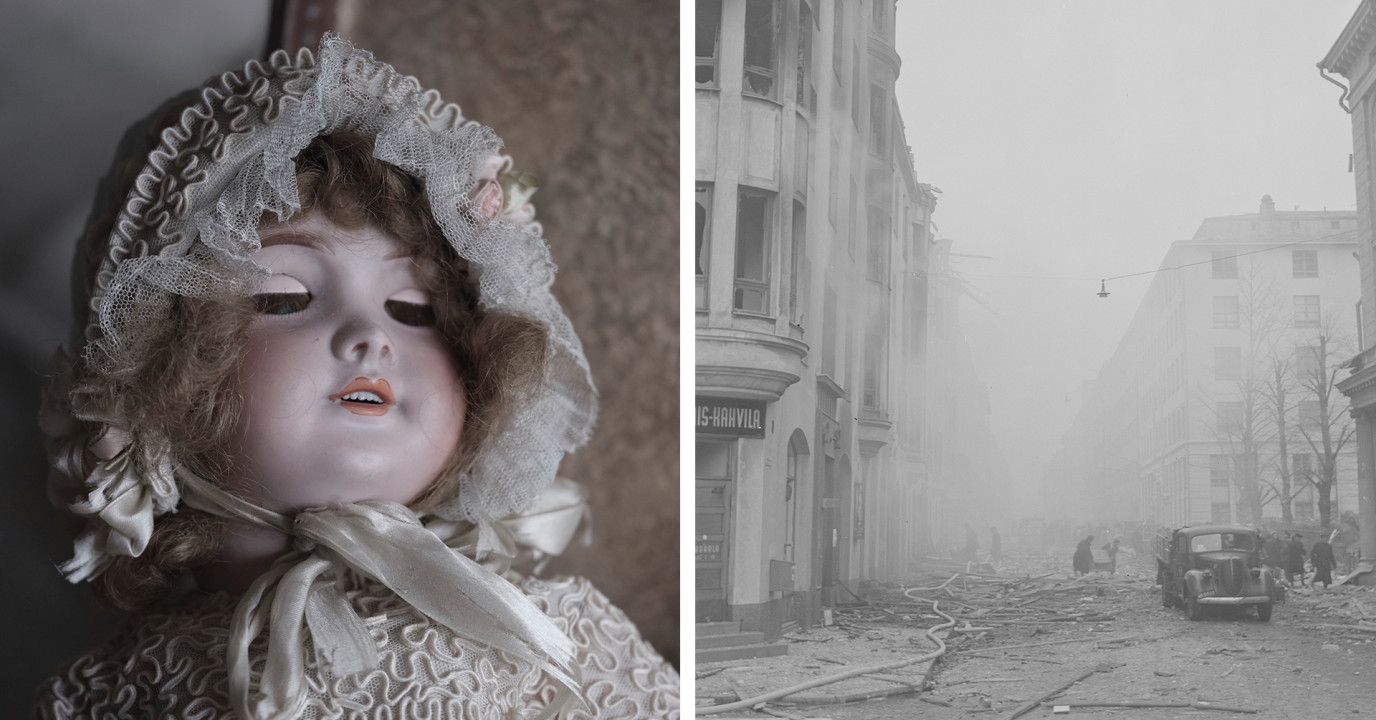
In the film Tears Zagros Manuchar addresses the theme of abuse through psychologist Alice Miller’s views on child abuse and its connections to brain damage. Building carefully considered images of abandoned, dusty, and expressionless dolls with minimalist details: shades, dust, old clothes and scenery, natural light, gazes, dark shadows and three dramatic dolls, Manuchar depicts the vulnerability of the human mind. The work underlines that child abuse still and desperately needs more attention.
In the second film Conversations with Mina, as a clear contrast Manuchar films a four-year-old Mina and her compassionate worldview. Using a lightweight video camera, he captures Mina’s open and spontaneous relationship to life and play. As the camera moves freely without a beginning or the end it creates notes of creativity and playfulness.
Blue. Red. Black. Gray. Yellow. And finally golden.
Dear viewer, please note that some of the scenes may be distressing and not suitable for everyone. The work Tears is not suitable for children.
Zagros Manuchar (b. 1990, Sulaimaniyya, Irak) is a Finnish filmmaker and artist. In his artistic work he has explored themes such as childhood, loneliness, violence and the necessity of being seen and loved. His works have been shown both in Finland and abroad.
In his master’s thesis and through two short films Manuchar explores both the importance of play and child abuse.
“Casting it in plaster monumentalized a space that is ignored” – Rachel Whiteread
Many places in Helsinki still bear traces of World War II – wounds left by bombshells on the granite of city walls. Do they act as a mark of value for the collective memory? History without memory is as unreadable as a flat wall made of granite. There is nothing to hook on to. The act of climbing is a way of understanding. As a Russian with Finnish roots, I think of the complex relationships between these two countries on a very personal level. During the war, my grandfathers were literally on the opposite sides of the border. One was witnessing the bombardment of Helsinki by the Soviets while the other one survived the airstrikes of the Finnish army in Petrozavodsk. I climb these traces in an attempt to understand these complex relationships.
This exhibition, Leave No Trace, is a part of the Climbing a Memory cycle. The title is linking to one of the important environmental principles in contemporary rock climbing. Being applied to the bombing traces in the city of Helsinki – how can we keep them as a part of the city landscape and not let them disappear?
Project website: www.climbingamemory.com
The author thanks the Finnish Defence Forces’ Photograph Archive for the photo material and Kiipeilyurheilijat ry, the sponsor of the exhibition, for providing the climbing equipment.
Pavel Rotts, born in Petrozavodsk, Russia (1982) currently based in Helsinki, is an artist working with a variety of techniques and forms, such as conceptual art, performance, sound-art, experimental music, installation and moving image. Rotts holds a BFA from the University of Arts Helsinki, and previously studied at St.Petersburg Stieglitz State Academy of Art and Design, graduating from Pro Arte Institute in 2008.
In his work, Rotts explores collective and personal memories, historical trauma and the legacy of the Soviet system in contemporary culture. Despite the serious topics, Rotts keeps a playful approach while working with the material. As an artist, Rotts has participated in numerous international exhibitions, events and concerts in collaborations with other artists and musicians. Many of his site-specific projects have been realised in artist residencies in different parts of Russia and Europe.
Pavel is co-founder of the SAHSAPASHA artist duo together with artist Sasha Rotts.
Galerii nimi: Uniarts Helsinki, Project Room
Address: Lönnrotinkatu 35, Helsinki, Finland
Opening hours: Tue-Sun 11:00 - 18:00
Open: 08.10.2021 — 24.10.2021
Address: Lönnrotinkatu 35, Helsinki, Finland
Opening hours: Tue-Sun 11:00 - 18:00
Open: 08.10.2021 — 24.10.2021